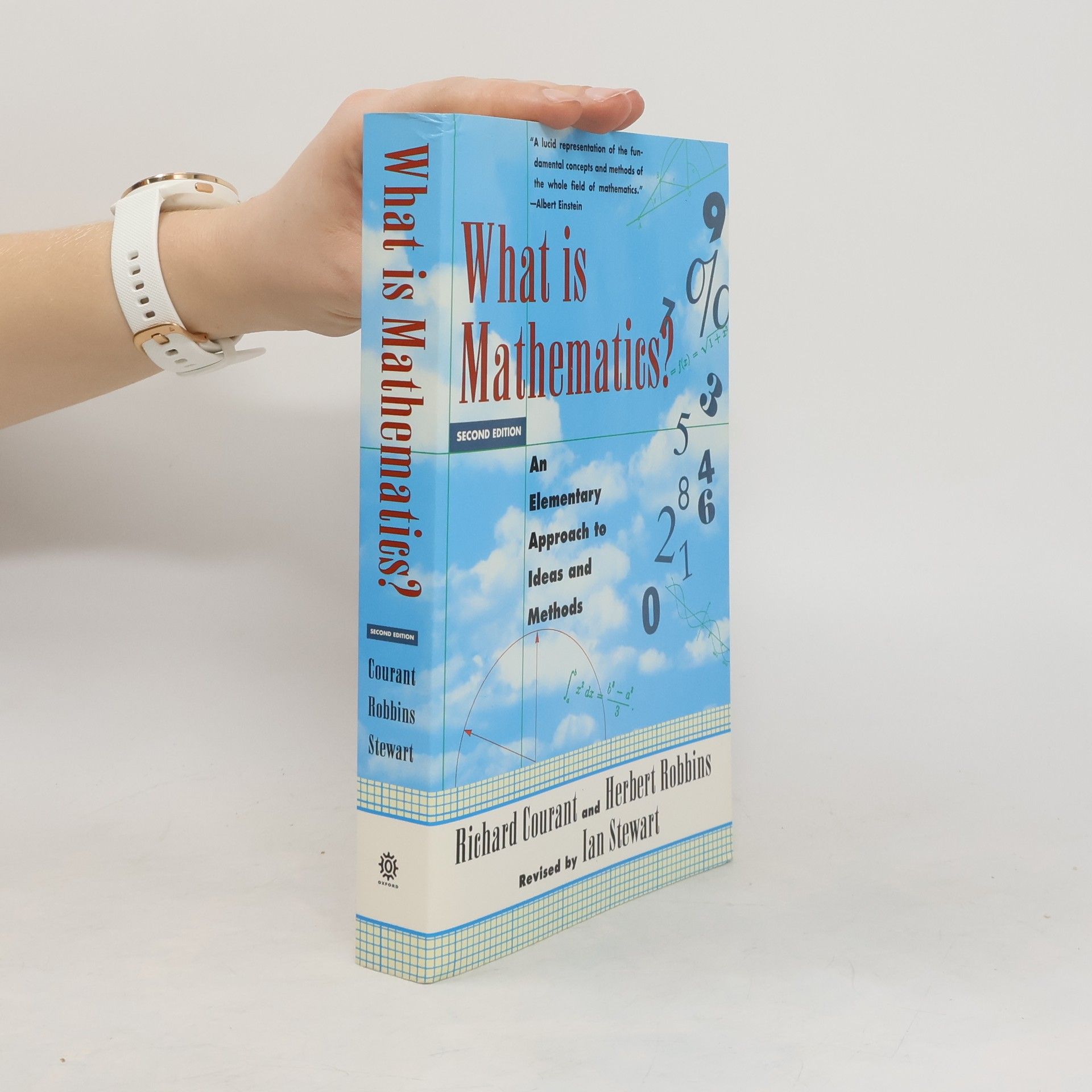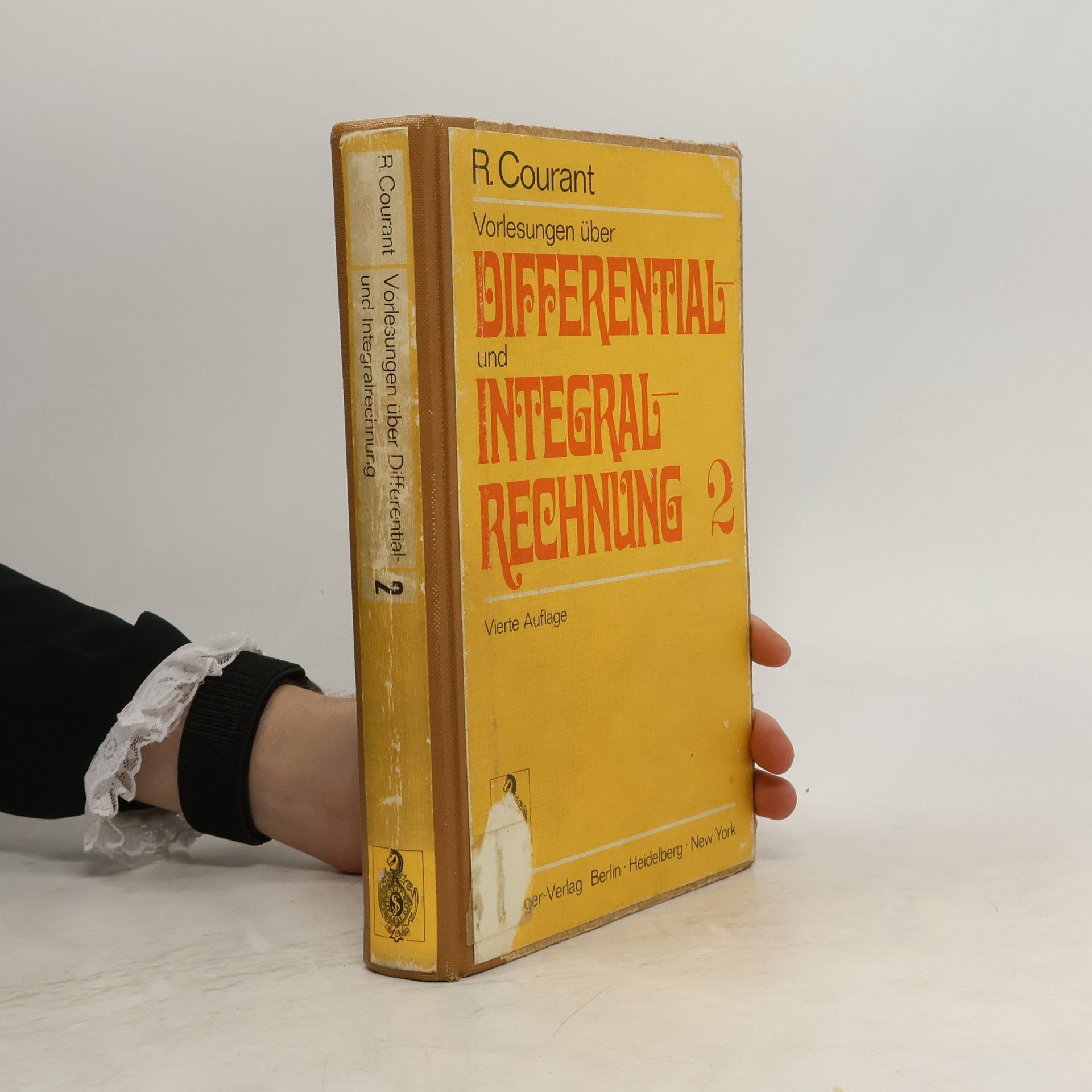From the reviews: "...one of the best textbooks introducing several generations of mathematicians to higher mathematics. ... This excellent book is highly recommended both to instructors and students." --Acta Scientiarum Mathematicarum, 1991
Richard Courant Livres
Richard Courant était un mathématicien germano-américain dont le travail a exploré les concepts mathématiques fondamentaux et les approches de résolution de problèmes. Son influence sur la communauté mathématique est évidente à travers ses écrits et son enseignement influents, qui ont inspiré des générations de mathématiciens. L'héritage de Courant perdure à travers la compréhension plus profonde des mathématiques qu'il a contribué à promouvoir. Il est particulièrement connu pour ses contributions à rendre accessibles les idées mathématiques complexes.






Introduction to calculus and analysis 1
- 661pages
- 24 heures de lecture
From the Preface: (...) The book is addressed to students on various levels, to mathematicians, scientists, engineers. Instead of obstructing the access to the wealth of facts by lengthy discussions of a fundamental nature we have sometimes postponed such discussions to appendices in the various chapters.
The teaching and learning of mathematics has degenerated into the realm of rote memorization, the outcome of which leads to satisfactory formal ability but not real understanding or greater intellectual independence. The new edition of this classic work seeks to address this problem. Its goal is to put the meaning back into mathematics. "Lucid . . . easily understandable".--Albert Einstein. 301 linecuts.
The history of the calculus and its conceptual development
- 346pages
- 13 heures de lecture
Fluent description of the development of both the integral and differential calculus. Early beginnings in antiquity, medieval contributions, and a century of anticipation lead up to a consideration of Newton and Leibniz, the period of indecison that followed them, and the final rigorous formulation that we know today.
Supersonic Flow and Shock Waves, a Manual on the Mathematical Theory of Non-linear Wave Motion
- 294pages
- 11 heures de lecture
On the Partial Difference Equations of Mathematical Physics
- 86pages
- 4 heures de lecture
Interaction of Shock and Rare-faction Waves in One-dimensional Media
- 132pages
- 5 heures de lecture
Methoden der mathematischen Physik
- 545pages
- 20 heures de lecture
In diesem Buch, erstmals 1924 bzw. 1937 erschienen, spürt man noch wie am ersten Tag die Frische und Inspiration zweier großer Mathematiker und Lehrer. Hilbert kann man mit Fug und Recht als den letzten Mathematiker bezeichnen, der in allen Gebieten seiner Wissenschaft zu Hause war und in den verschiedensten Bereichen der Mathematik grundlegende neue Erkenntnisse gewann. Seine Resultate haben entscheidend die moderne Auffassung vom Wesen der Mathematik geprägt. Sein Schüler Courant galt und gilt auch heute noch als ein ausgezeichneter Lehrer, der auch schwierigste Materien verständlich darstellen konnte. Das bei Springer erschienene Buch von Courant/Robbins: Was ist Mathematik , kann in diesem Zusammenhang als beispielhaft genannt werden. Alles in allem eine großartige Zusammenfassung der mathematischen Hilfsmittel des Physikers, die auch heute noch viele enthusiastische Leser finden wird.
Was ist Mathematik?
- 399pages
- 14 heures de lecture
47 brauchen nur den Nennern so gross zu wahlen, dass das Intervall [0, 1/n] kleiner wird als das fragliche Intervall [A, B], dann muss mindestens einer der Bruche mfn innerhalb des Intervalls liegen. Also kann es kein noch so kleines Intervall auf der Achse geben, das von rationalen Punkten frei ware. Es folgt weiterhin, dass es in jedem Intervall unendlich viele rationale Punkte geben muss; denn wenn es nur eine endliche Anzahl gabe, so konnte das Intervall zwischen zwei beliebigen benachbarten Punkten keine rationalen Punkte enthalten, was, wie wir eben sahen, unmoglich ist. 2. Inkommensurable Strecken, irrationale Zahlen und der Grenzwertbegriff 1. Einleitung Vergleicht man zwei Strecken a und b hinsichtlich ihrer Grosse, so kann es vor kommen, dass a in b genau r-mal enthalten ist, wobei r eine ganze Zahl darstellt. In diesem Fall konnen wir das Mass der Strecke b durch das von a ausdrucken, indem wir sagen, dass die Lange von b das r-fache der Lange von a ist. Oder es kann sich zeigen, dass man, wenn auch kein ganzes Vielfaches von a genau gleich b ist, doch a in, sagen wir, n gleiche Strecken von der Lange afn teilen kann, so dass ein ganzes Vielfaches m der Strecke afn gleich b wird: b=!!!..a."
Vorlesungen über Differential- und Integralrechnung - Vierte Auflage
- 482pages
- 17 heures de lecture

